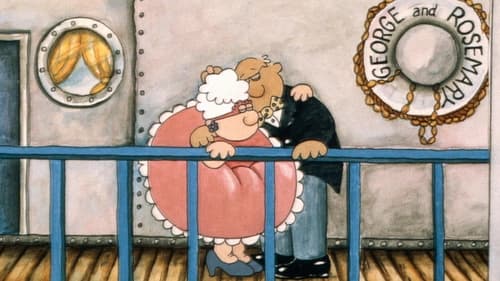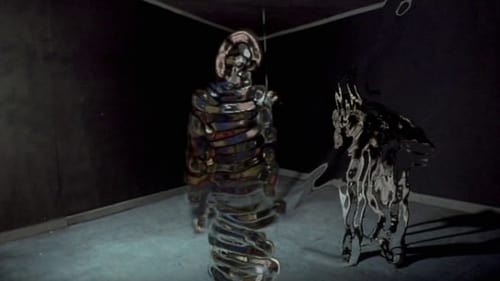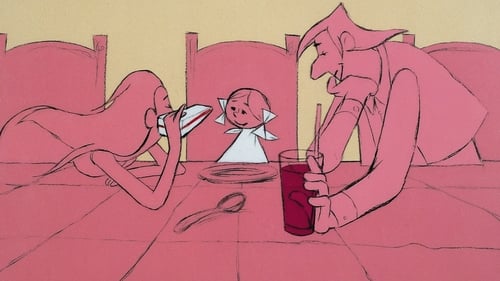Unrolling Event (1965)
Género :
Tiempo de ejecución : 1M
Director : Paul Sharits
Sinopsis
Toilet paper event, single frame exposures.

Single frame exposures of dot-screens.

A man from the city walks around the country side. He tries to find out what farmers are hiding below the plastic belts on their territory.

Various gestures of hand held razorblade, single frame exposures.

Two reels of mis-takes in shooting Part II of 3RD DEGREE. Film was loaded in camera improperly and the image slides about off-center and becomes blurred – creating some rather amusing and mysterious imagery. A made “found” object. —ubu.com

Short film by Peter Kubelka. Arnulf Rainer contorts his mind and body before the camera.

Short film by Zbig Rybczyński.

Single frame exposures of words.

“The screen, illuminated by Paul Sharits’ N:O:T:H:I:N:G, seems to assume a spherical shape, at times – due, I think, to a pearl-like quality of light his flash-frames create … a baroque pearl, one might say – wondrous! … One of the most beautiful films I’ve seen.” – Stan Brakhage

Bruce Baillie's Mr. Hayashi might be thought of as a putative East Coast story transformed by a West Coast sensibility. The narrative, slight as it is, mounts a social critique of sorts, involving the difficulty the title character, a Japanese gardener, has finding work that pays adequately. But the beauty of Baillie's black-and-white photography, the misty lusciousness of the landscapes he chooses to photograph, and the powerful silence of Mr. Hayashi's figure within them make the viewer forget all about economics and ethnicity. The shots remind us of Sung scrolls of fields and mountain peaks, where the human figure is dwarfed in the middle distance. Rather than a study of unemployment, the film becomes a study of nested layers of stillness and serenity.

M. Rasta, a high society con man, is accused of a crime he didn't commit.

After bullies steal his son's lunch-box, a retired wrestler goes on a violent rampage to avenge him and bring justice to the school.

The scene opens on a theatrical stage. The magician enters from the wings, and making a bow to the audience, removes his coat and hat and they disappear mysteriously in the air. He then takes a white handkerchief from his pocket, holds it over his knees, and his long trousers disappear, and behold! he is clad in knickerbockers. He next makes a pass with a magic wand and a table suddenly appears before the audience, on which is a large pile of tissue paper. The magician takes up the paper and shakes it a few times and three live geese fly out upon the floor. This is a highly pleasing and mystifying subject.

A montage of some home movies taken by Archie Stewart (1902-1998), an early enthusiast in taken 16 mm sound films of his family. We see his daughters, Mary and Anne, playing in the aftermath of a January, 1936, snowstorm. Next, indoors, the girls bring in a birthday cake and sing to Archie. He has Anne read to him from a children's book, and a year later, has her read aloud to show her progress. Anne and Mary dress up Pat the family dog in a dress and scarf and hold a tea party, chattering away. Archie's high-pitched voice provides narration on and off camera.

A shy old man works up the gumption to meet a woman on whom he has a crush.

Pollet provides an insight into life on the leper colony of Spinalonga, an island off Crete, through the eyes of Raimondakis, who tells the story of his life to the camera after having been excluded from his community to spend years of his life on the island with his fellow sufferers. Themes addressed include love, community, companionship and death and the importance of these values to all people whatever their state of health.

Memories split in the space.

Zineb is a psychiatrist assigned to Rihana, a traumatized and pregnant young woman, who was raised as a son by her dictatorial father. Rihana's story awakens repressed thoughts in Zineb's own mind.

A surrealist saga in four parts: 1.) The credit sequence in which title cards show successively larger foetuses pulsating on the screen until the baby is born and cries.
2.) Etoile-directly referring to Cocteau, Lethem shows an adolescent sucking a starfish and then giving birth to a smaller starfish. A statement of inadequacy. To give birth involves an emasculation and a loss of vitality.
3.) Corps-two images of a man on a couch groping for each other, watched by a mysterious peeping Tom. As the two superimposed images come together, the heavy breathing subsides…the statement that the birth of desire is a self – realisation.
4.) Hymen – The decaying body of a girl is shot through green filters, and the final image reveals her vagina crawling with maggots and overlain with a crucifix. A representation of Catholicism preventing the free expression of desire.

Two tree-creatures hibernating underneath the bark of their trees wake up by the quakes produced by a snowfall outside. After going out, they become friends and delight at playing with the snow.

An Oscar nominated animated short about the relationship between children and their parents.










